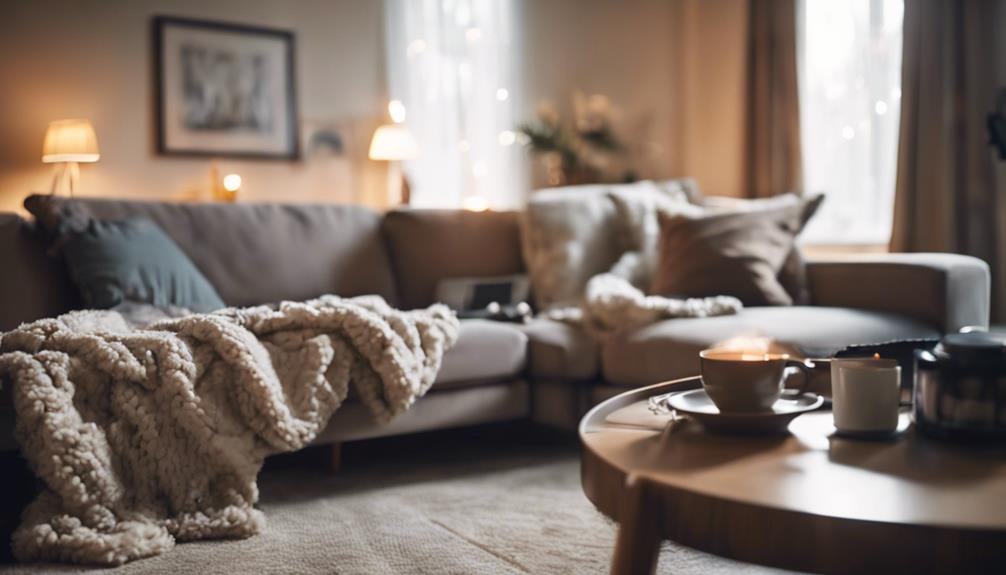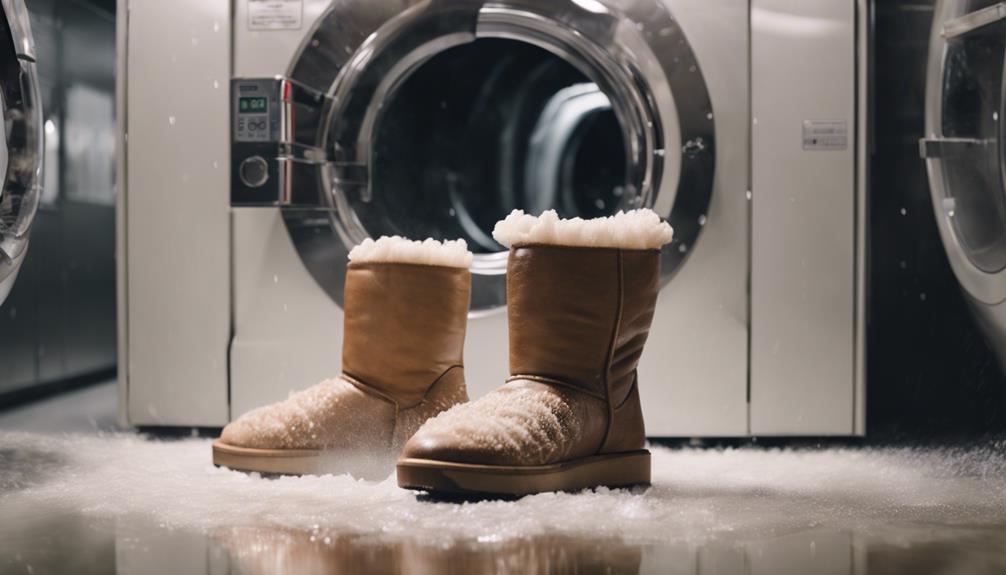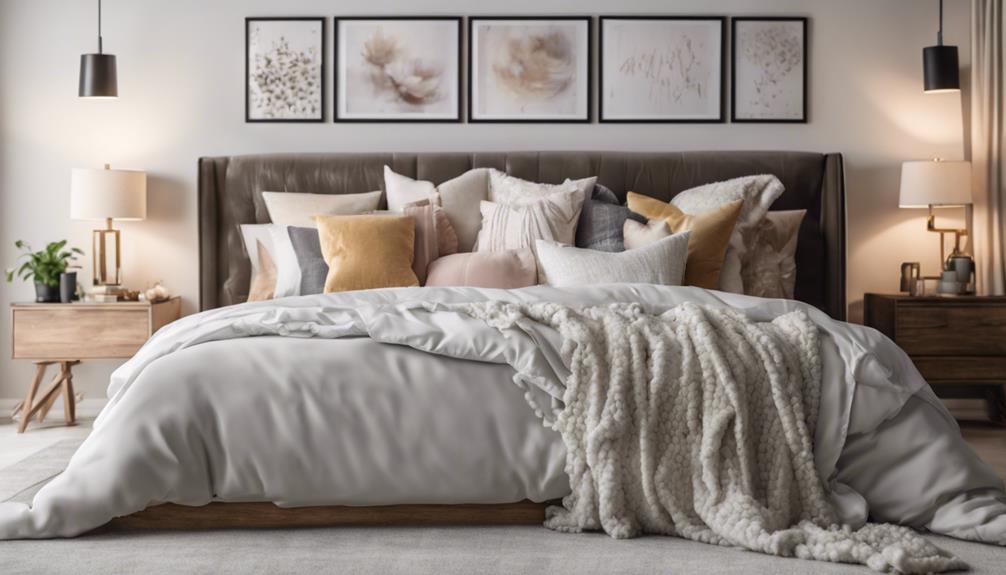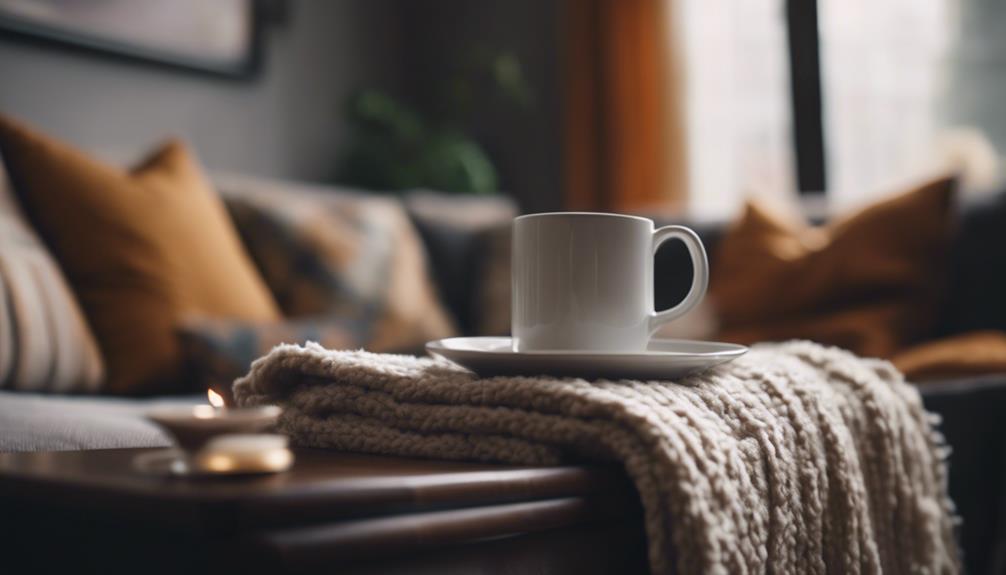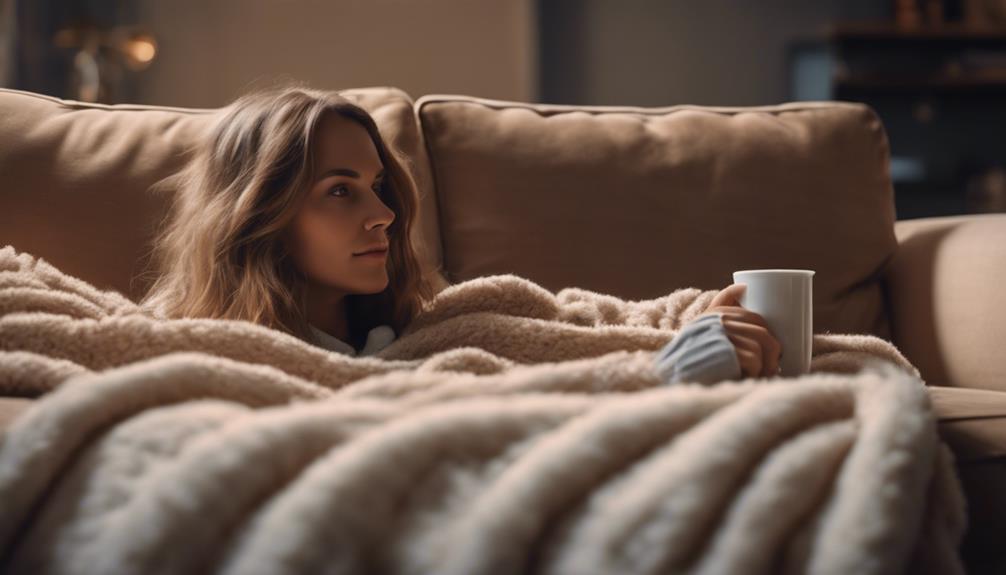Electric throws provide targeted warmth in an economical way, using 100-150 watts per hour. They offer a cost-effective option compared to central heating systems, helping save energy. Pre-warming on low settings can help maximize efficiency, while features like auto shut-off add to safety and convenience. By providing localized warmth, they can reduce the need to heat entire rooms, ultimately cutting down on energy consumption and costs. With adjustable heat settings and energy-efficient design, electric throws are a smart choice for staying warm during cold weather. For more information on their efficiency and environmental impact, continue exploring our detailed insights.
Key Takeaways
- Electric throws offer targeted warmth, reducing overall energy consumption.
- Lower thermostat usage and use electric throws for substantial cost savings.
- Initial investment offset by long-term energy bill reductions.
- Energy-efficient design minimizes electricity consumption and operating costs.
- Adjustable settings and pre-warming feature enhance energy efficiency and economic benefits.
Energy Efficiency of Electric Throws
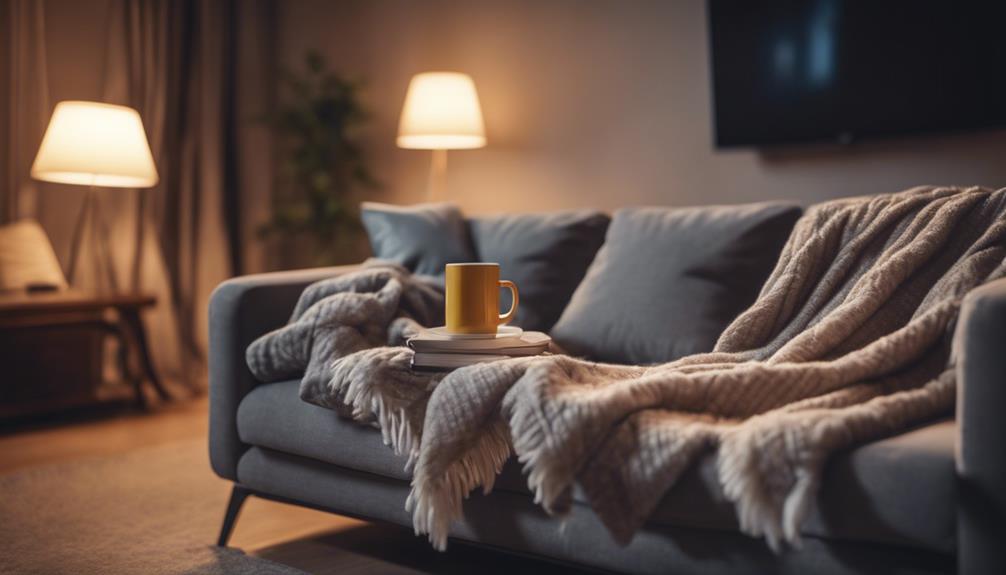
How can electric throws help us save on energy costs while providing targeted warmth efficiently?
Electric throws are designed to be energy-efficient by offering localized warmth, which reduces the need to heat an entire room. By using an electric blanket, individuals can pre-warm it on a low setting to maintain comfort without relying on central heating, ultimately saving energy.
Lowering the thermostat and using an electric throw can lead to significant energy savings, as recommended by the Energy Saving Trust. The targeted warmth provided by electric throws allows users to stay comfortable without consuming excess energy like traditional heating methods.
Cost Comparison: Electric Throws Vs. Other Heating Methods

When comparing electric throws to other heating methods, one can easily see the cost-effectiveness they offer through targeted warmth and energy savings. Electric throws are more economical than traditional central heating systems due to their ability to provide warmth directly to individuals, reducing the need to heat entire rooms. This targeted approach can lead to significant cost savings, especially when used strategically alongside lower central heating settings or as a pre-warming method for bedding. The energy-efficient nature of electric throws further enhances their cost-effectiveness by minimizing energy wastage.
In terms of cost comparison, electric throws are generally more affordable to purchase and operate than many other heating methods. While there may be an initial investment in the blanket itself, the long-term savings on energy bills make electric throws a cost-effective heating solution. Pairing electric throws with energy-saving practices like home insulation and smart heating control can amplify their cost-effectiveness even more. Overall, when considering electric blanket costs and the benefits they offer, electric throws emerge as a practical and economical choice for targeted warmth and efficient heating.
Factors Affecting the Running Costs

To calculate the running costs of electric throws, consider the wattage of the throw and the local electricity rates. Energy-efficient electric throws can help lower overall running costs by consuming less electricity. By utilizing adjustable settings and pre-warming the throw on a low setting, you can save energy and reduce running costs even further. Lowering the thermostat in your home and using an electric throw strategically can lead to noticeable savings on your energy bills. Proper insulation in your home also plays an essential role in the effectiveness and economy of using electric throws. Below is a table summarizing the key factors affecting the running costs of electric throws:
| Factor | Impact on Running Costs |
|---|---|
| Wattage of the throw | Higher wattage leads to increased electricity consumption |
| Local electricity rates | Higher rates result in higher overall running costs |
| Energy-efficient design | Energy-efficient models consume less electricity, reducing costs |
Environmental Impact of Electric Throws
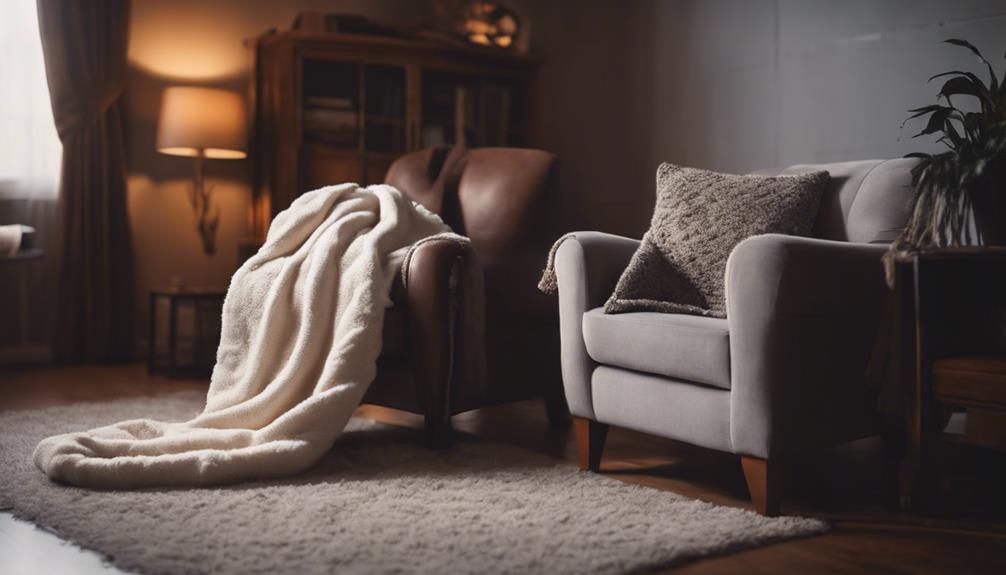
Electric throws play a role in reducing energy consumption by heating individuals directly, rather than entire rooms. This targeted approach results in lower energy usage and cost savings compared to central heating systems.
Considerations such as energy efficiency, material sourcing, and disposal methods contribute to the overall environmental impact of using electric throws.
Energy Efficiency Comparison
Comparing the energy efficiency of electric throws to traditional heating methods reveals significant cost-saving and environmental benefits. Electric throws are designed to be energy-efficient, providing targeted warmth without the need to heat an entire space, unlike central heating systems.
By using electric throws strategically, individuals can reduce overall energy consumption, leading to potential cost savings on utility bills. This not only benefits the wallet but also contributes to sustainable heating practices by conserving energy and reducing environmental impact.
Embracing eco-friendly practices through the use of electric throws helps promote a greener lifestyle. Hence, considering the energy efficiency and cost-saving advantages of electric throws makes them a practical and environmentally conscious choice for home heating.
Material Sourcing Considerations
Considering the environmental impact of electric throws, sourcing materials responsibly is crucial for promoting sustainability and reducing harm to the planet. Many electric throws are crafted from eco-friendly materials like recycled polyester, which helps minimize their environmental footprint. Manufacturers adopting sustainable sourcing practices further enhance the eco-conscious production of these items.
Opting for electric throws made with organic or natural fibers can also contribute to reducing environmental impact. Choosing products with certifications such as OEKO-TEX or Global Organic Textile Standard (GOTS) guarantees that the electric throws meet specific environmental standards. By selecting throws with these eco-friendly materials and certifications, consumers can support the use of sustainable materials and practices in the production of electric throws.
Disposal and Recycling
Sourcing materials responsibly for electric throws is just the first step in promoting sustainability; now, let's explore the environmental impact further by discussing disposal and recycling practices.
Electric throws can be recycled at specialized e-waste recycling facilities, where valuable materials are recovered to reduce environmental impact. Recycling helps prevent hazardous components like wiring and heating elements from ending up in landfills, avoiding potential environmental contamination.
Proper disposal of electric throws is essential to prevent harm from chemicals and plastics used in their construction. Manufacturers often offer take-back programs for old electric throws, ensuring responsible recycling.
Recycling not only conserves energy and minimizes greenhouse gas emissions but also reduces the need for new raw materials, making it a sustainable choice for the environment.
Long-Term Savings With Electric Throws
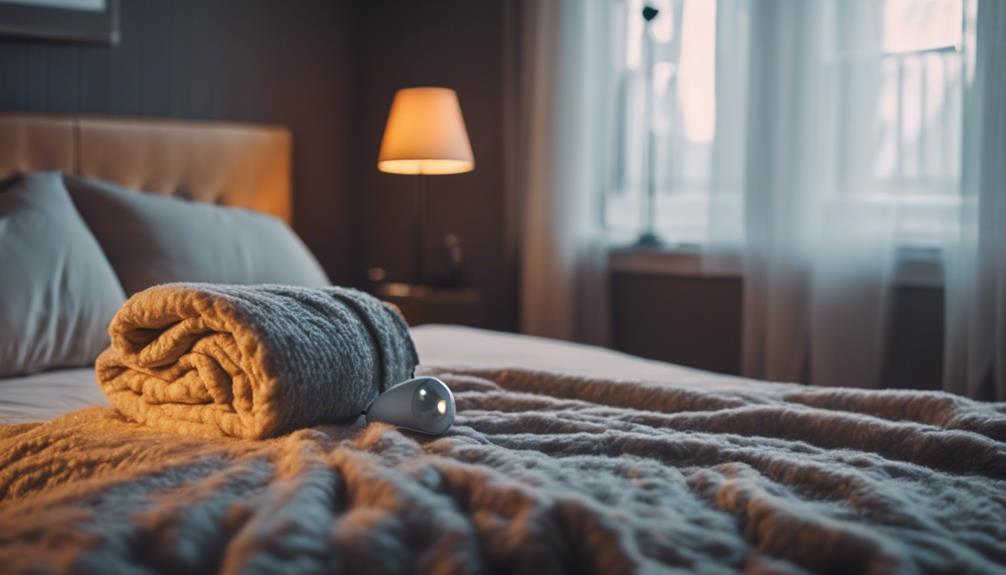
Electric throws provide both immediate comfort and long-term energy cost savings. By incorporating energy-efficient features such as auto shut-off and adjustable heat settings, these throws can maximize economic benefits. Lowering the thermostat and using an electric throw as a supplement can lead to substantial cost-efficiency in the long run.
Electric throws not only offer immediate comfort but can also lead to long-term savings on energy costs. By utilizing energy-efficient features like auto shut-off and adjustable heat settings, we can optimize the economic benefits of using electric throws. Lowering the thermostat and supplementing with an electric throw can contribute to significant cost-efficiency over time.
Cost-Efficiency of Throws
Incorporating an energy-efficient electric throw into your heating strategy can lead to substantial long-term savings by providing targeted warmth and reducing overall energy consumption. Electric throws typically consume around 100-150 watts per hour, costing only about 1-2 cents hourly to run.
By opting for an electric throw instead of cranking up the central heating, you can potentially save a significant amount on your energy bills. To enhance cost-efficiency, consider investing in a high-quality electric throw with features like adjustable heat settings and auto shut-off.
Utilize your electric throw strategically by pre-warming on a low setting or combining it with other energy-saving measures to maximize its economical benefits.
Energy-Saving Technology
Considering the potential for long-term savings through energy-efficient technology, electric throws equipped with advanced features offer a strategic solution for reducing heating costs. With programmable timers and auto shut-off functions, these throws help optimize energy consumption by heating only when needed.
Energy-efficient models can even be remotely controlled via smartphones or smart home systems, allowing for precise temperature management. Some electric throws go a step further by incorporating sensors that adjust heat output based on room temperature, ensuring maximum efficiency.
Safety Considerations for Electric Throws

When using electric throws, prioritizing safety is essential to prevent accidents and guarantee a cozy experience. Electric blankets come with safety features such as auto shut-off mechanisms that prevent overheating and fire hazards, ensuring peace of mind during use.
Additionally, the maximum temperature settings on electric throws help maintain a safe and comfortable warmth without the risk of burns or injuries.
It is important to follow the manufacturer's instructions carefully when using electric throws, especially concerning the appropriate usage around children and pets. Avoid using electric throws on damaged power outlets or with extension cords to prevent potential electrical accidents.
Regularly inspect your electric throw for any signs of wear and tear to uphold safety standards and avoid hazards.
Tips for Maximizing Efficiency
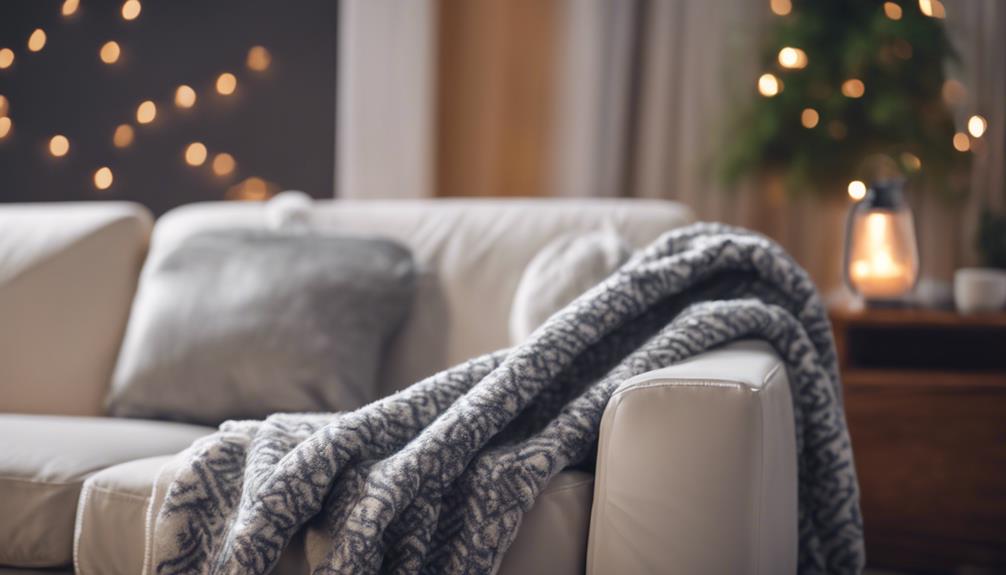
To enhance the cost-effectiveness of your electric throw, consider pre-warming it on a low setting to save energy and maximize efficiency. By starting at a low setting, the electric throw can gradually reach the desired warmth without consuming excessive energy. Additionally, maintaining your home's overall thermostat and using the electric throw for targeted warmth can help reduce overall energy consumption.
It's also vital to confirm your home is well-insulated and draft-proofed to make the most of the heat generated by the electric throw. This way, the warmth remains inside, and the electric throw doesn't have to work harder to compensate for heat loss. Keeping doors closed in unused rooms further retains warmth and optimizes the efficiency of the electric throw.
Employing energy-saving techniques like thicker curtains, chimney solutions, and radiator shelves in conjunction with the electric throw can enhance cost-effectiveness by maximizing insulation and reducing heat loss. By implementing these tips, you can efficiently use your electric throw while minimizing energy consumption and maximizing its effectiveness.
Choosing the Right Electric Throw
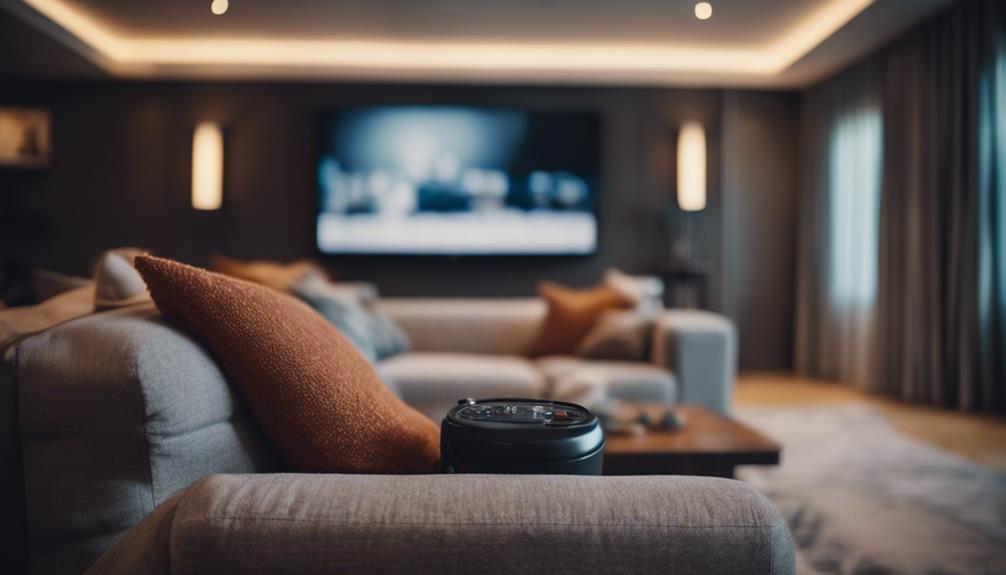
For peak comfort and efficiency, selecting the right electric throw is crucial. Electric throws are a cost-effective solution for targeted heating, particularly in specific areas like sofas or armchairs. They provide warmth where needed, consuming less energy than traditional central heating systems. This can lead to potential savings on energy bills over time.
To maximize efficiency, consider pre-warming the electric throw on a low setting. This can help save energy by reducing the need for higher heat settings later on. By using electric throws to warm individuals rather than entire rooms, you can achieve a higher level of energy efficiency. Lowering the thermostat and incorporating electric throws into your heating strategy can help reduce overall energy consumption and costs.
When choosing an electric throw, look for features like adjustable heat settings and automatic shut-off for safety. Prioritizing energy efficiency and targeted heating will guarantee that you get the most out of your electric throw while keeping costs down.
Conclusion: Are Electric Throws Worth It?
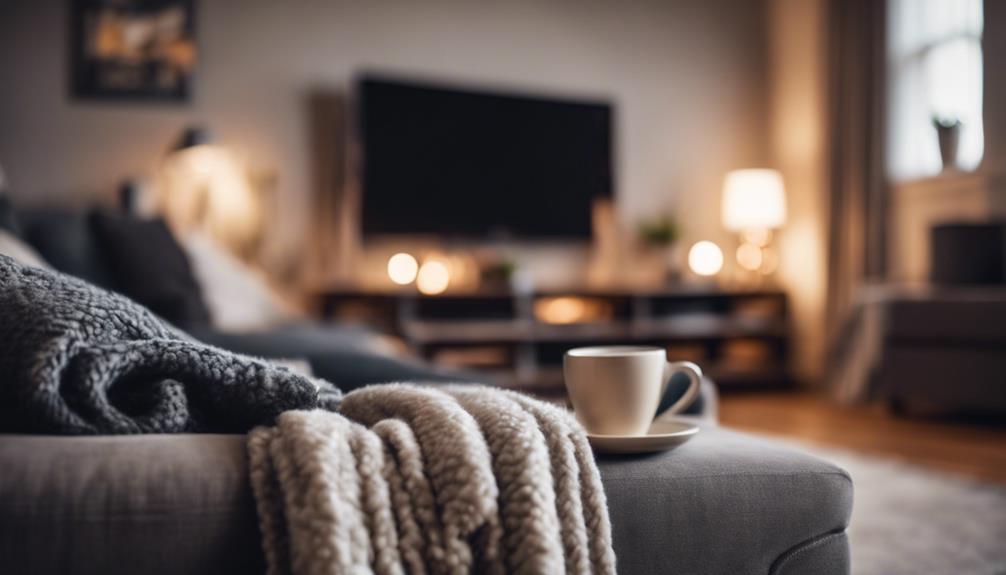
After considering the cost-effectiveness and energy-saving benefits of electric throws, it is evident that they are a worthwhile investment for targeted heating needs. Electric throws consume around 100-150 watts per hour, making them energy-efficient options that can lead to significant savings on heating costs compared to central heating systems. These throws come equipped with features like auto shut-off and adjustable heat settings, enhancing their practicality. By providing localized warmth, electric throws eliminate the need to heat an entire room, further contributing to cost-effectiveness. With proper usage and energy-saving practices, electric throws prove to be economical and efficient solutions for combating cold weather.
| Benefits | Electric Throws |
|---|---|
| Cost-effective | ✓ |
| Energy-efficient | ✓ |
| Reduced heating costs | ✓ |
| Localized warmth | ✓ |
| Practical | ✓ |
Frequently Asked Questions
Does a Heated Throw Use a Lot of Electricity?
Heated throws typically use 100 to 200 watts of electricity per hour, which can cost 10 to 20 cents per day when used for 10 hours. Compared to central heating, they offer cost-effective targeted warmth.
Energy-efficient models can help save on overall heating expenses, especially in cooler seasons. Monitoring usage and adjusting heat settings can further optimize energy consumption.
Are Electric Throws Expensive to Run?
Electric throws are cost-effective options for targeted warmth, consuming 1 to 5 cents per hour based on wattage and efficiency. Running for 6 hours daily, they could cost $5 to $15 per month. Their electricity usage, ranging from 70 to 150 watts, minimally impacts bills.
Compared to central heating, they offer substantial energy savings, especially when heating specific areas. Advanced features like auto shut-off enhance efficiency and make them economical choices for staying warm.
Are Electric Throw Blankets Energy Efficient?
Electric throw blankets are indeed energy efficient. By providing targeted warmth, they can help save energy compared to heating entire rooms. Pre-warming on a low setting reduces the need for higher heat settings and can lead to significant energy savings.
Lowering the thermostat while using an electric throw is recommended for efficiency. These blankets consume less electricity than central heating systems, making them a cost-effective heating option.
Is Using an Electric Blanket a Waste of Energy?
Using an electric blanket isn't a waste of energy. Electric throws can be a cost-effective way to stay warm while reducing overall heating expenses. By pre-warming on a low setting and adjusting the thermostat down, energy consumption can be minimized.
Modern electric blankets with features like auto shut-off help save power. Compared to running central heating, electric throws are generally more energy-efficient for maintaining comfort.
Can Electric Throws Save Money on Heating Costs?
Using an electric throw blanket operation can definitely help save money on heating costs. By using the electric throw blanket to keep warm while lowering the thermostat, it reduces the overall energy consumption and ultimately leads to significant savings on heating bills.
Conclusion
To sum up, electric throws can be a cost-effective and efficient heating option for your home. With their energy efficiency, savings compared to other heating methods, and minimal environmental impact, they're a practical choice.
By following safety guidelines and maximizing efficiency, you can enjoy the benefits of electric throws while keeping your energy bills in check.
So, whether you're looking to stay warm on a chilly night or save on heating costs, electric throws are definitely worth considering.
